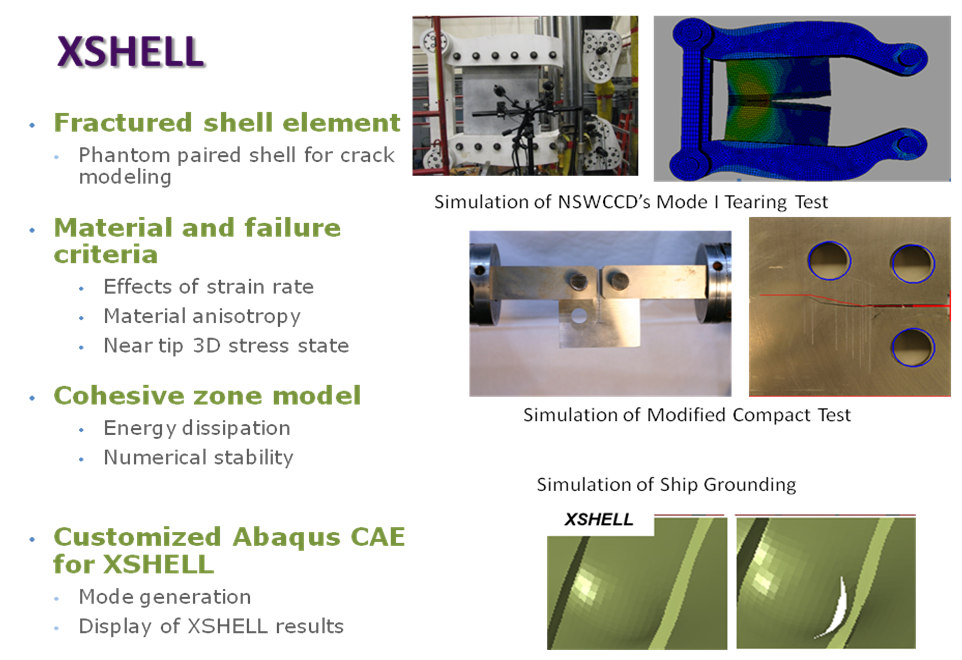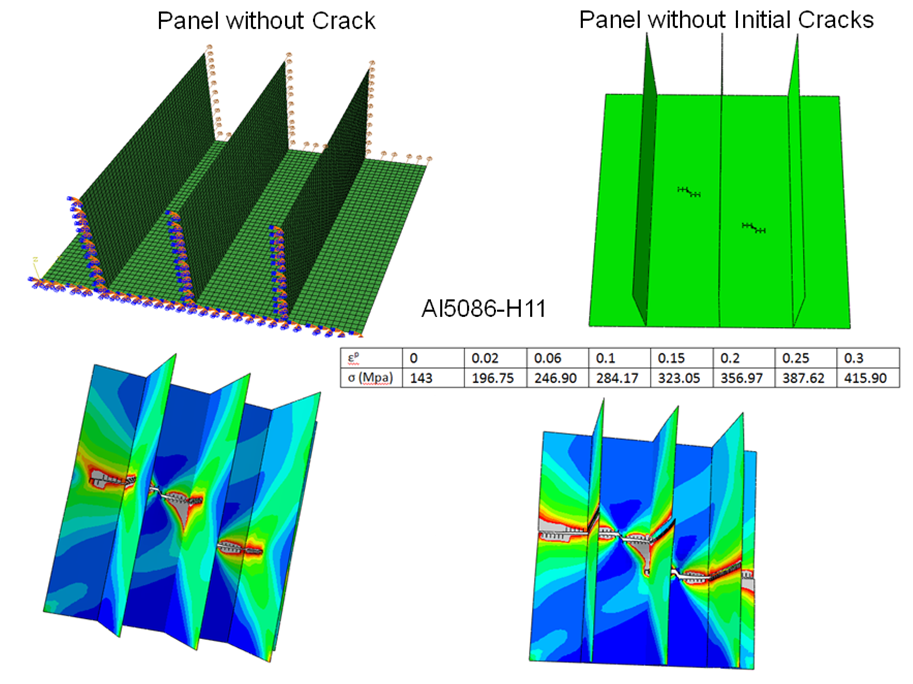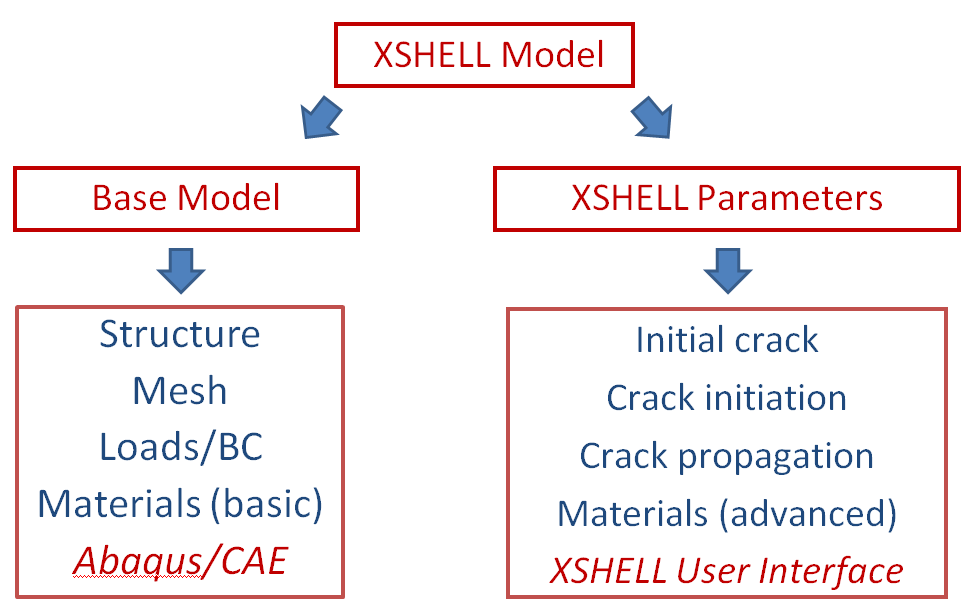
Products
GEM develops powerful toolkits to address complex engineering issues.
XSHELL
Global Engineering and Materials, Inc. (GEM) has developed an extended finite element method applied to shell elements toolkit (XSHELL) using the explicit Abaqus solver by coupling advanced element technology with material and failure models for characterization of ductile aluminum materials and crack initiation and propagation. A kinematic description of an arbitrary cracked shell has been accomplished using discontinuous displacement and velocity fields based on two overlay elements with a set of physical and phantom nodes. In order to characterize the elastoplastic material behavior, rate dependence, and the triaxility and Lode angle dependent failure surface, a suite of material models have been also implemented in XSHELL. In addition, a plane strain core model has been developed to capture a 3D stress field within the shell formulation for the prediction of triaxility dependent failure initiation.
A summary of XSHELL toolkit for Abaqus is given below.
In addition to the simulation of a single crack growth, a kinematic crack branching technique has been implemented within the XSHELL toolkit to characterize the crack growth in a multi-bay stiffened panel. An illustration of multiple crack growth in a multi-bay stiffened panel is shown below where the skin crack has branched to its two new cracks in the skin and stiffener. A contour plot for the cumulative plastic strain is displayed in the figure below.
Two types of XSHELL model input files are generated using Abaqus/CAE and XSHELL user interface. The base model generated from Abaqus/CAE includes the definition of the user-defined XSHELL zone and the remaining Abaqus shell elements in addition to the applied boundary conditions and material properties. Both the XSHELL customized GUI and keyword interface can be used to input XSHELL model parameters for the definition of crack initiation, propagation, crack direction and failure criteria, user-defined materials, and output options.
Given the user selected option, two approaches have been implemented to visualize the results associated with user-defined elements. Using Option 1, a series of ODBs, each contains an individual frame, will be written during the simulation. With Option 2, a post-processing script can be executed after simulation to create a master ODB with results from all frames.
The XSHELL toolkit provides an efficient way for dynamic performance evaluation and crack path prediction for thin-walled metallic structure subjected to impulsive dynamic loading. The software tool is of great benefit to aid in fracture damage and residual strength assessment of large scale welded structures and to evaluate impact damage and explore new design options to improve the structural performance under dynamic loading.
Key modeling capabilities:
- XSHELL Element Library (completed)
- C0 triangular shell
- B-T and H-L shell
- Mixed 4-node (BT/HL) and 3-node shell element zone
- Constitutive Models in XSHELL (completed)
- J2 with and without triaxility dependent accumulative plastic strain
- I1-J2-J3 rate dependent/independent
- Johnson Cook without and with data look option
- 2D anisotropic plasticity model based on Yld2000
- Additional models and modeling techniques (completed)
- PPR (Park, Paulino, & Roseler) potential-based cohesive model
- Plane strain core model
- Residual stress for welded structures
- Crack branching for stiffener panels
- Crack growth direction law based on maximum plastic strain
- Weighted average for accumulative plastic strain and crack growth angle
- Pre- and post- analysis modules for XSHELL
- Pre-analysis module (keyword interface/customized Abaqus CAE)
- Post-analysis module (ODB generation for XSHELL elements)



